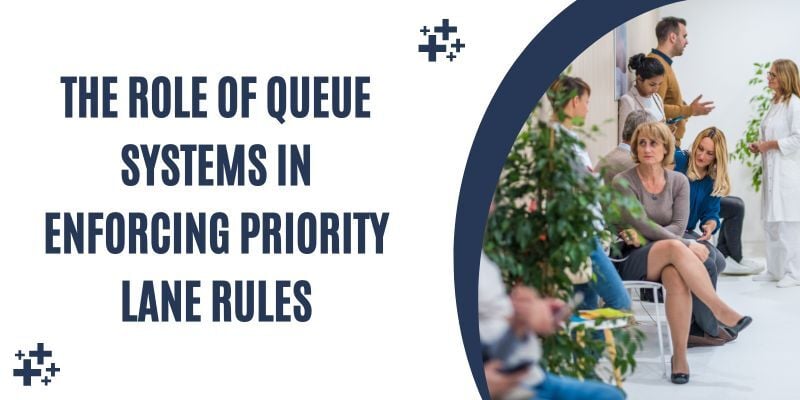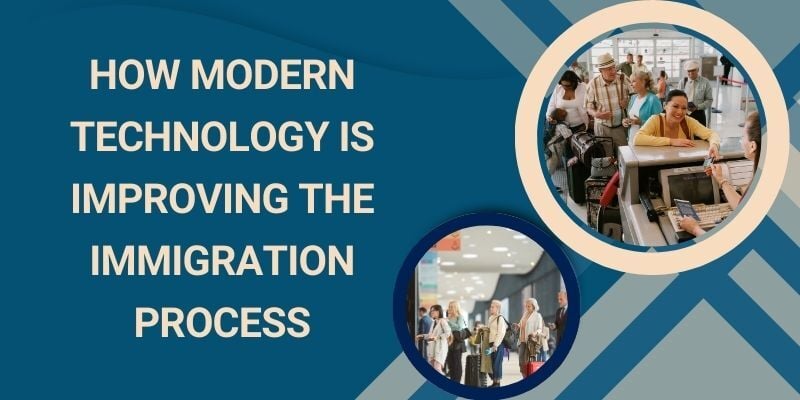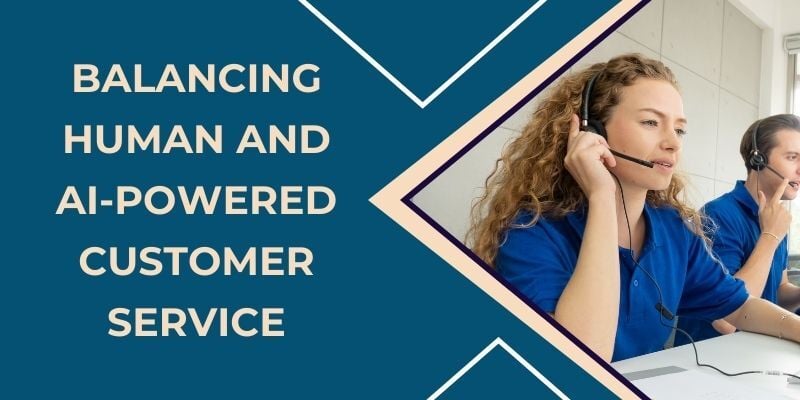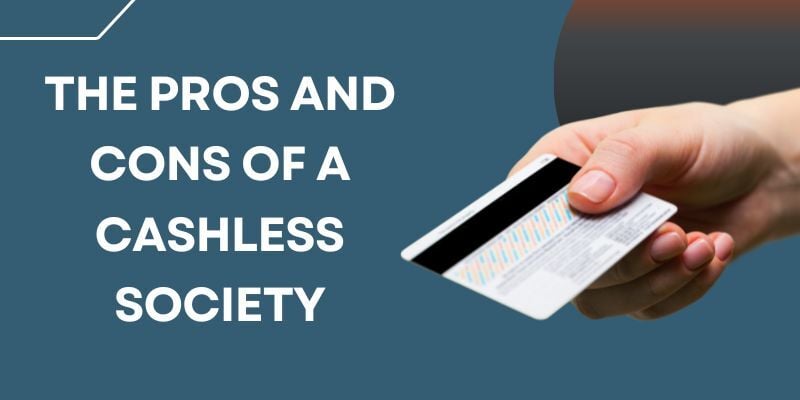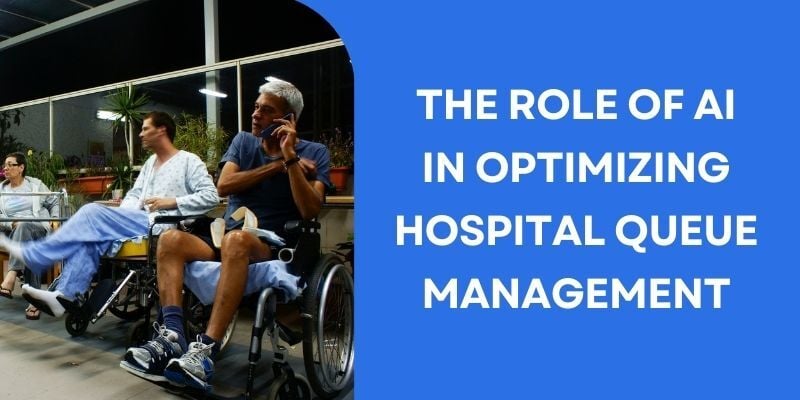Governments worldwide are adopting self-pay kiosks to modernize tax collection and improve compliance. These automated payment stations make tax payments more accessible by offering digital transactions, multilingual support, and real-time processing.
By eliminating long wait times and reducing paperwork, they encourage more taxpayers to pay on time. This better access leads to higher tax payments, boosting government revenue.
Apart from convenience, self-pay kiosks help governments increase tax revenue by reducing manual processing costs and enhancing efficiency.
Operating 24/7, they allow taxpayers to make payments at their convenience, which minimizes late or missed payments. Automation also improves financial transparency, ensuring accurate and timely reporting.
As digital solutions evolve, self-pay kiosks are becoming essential for governments looking to enhance tax collection while improving the taxpayer experience.
Role of Self-Pay Kiosks in Boosting Government Revenue Collection
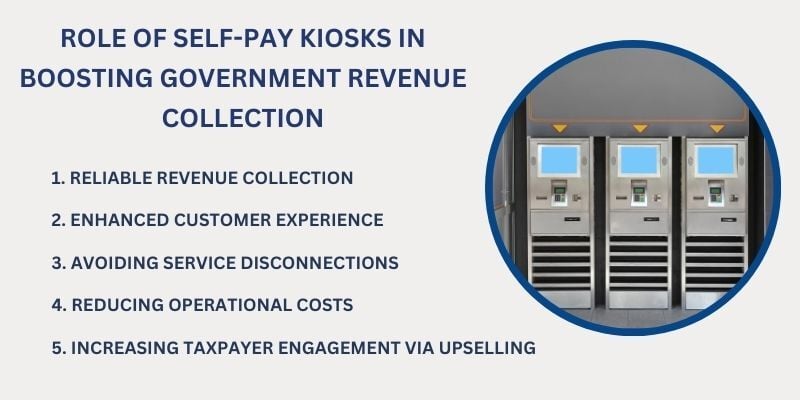
Self-pay kiosks, along with cash deposit machines, are changing how governments collect taxes, providing an efficient, convenient, and modern solution for taxpayers. These kiosks simplify the tax payment process, offering a self-service method that improves tax compliance and enhances the user experience.
As governments continue to embrace this technology, its impact on revenue collection is becoming more evident. The self-service kiosk market is expected to grow from $26.38 billion in 2024 to $28.39 billion in 2025 at a CAGR of 7.6%.
In short, self-pay kiosks for tax collection are not just a passing trend but an important tool for improving government efficiency, streamlining operations, and encouraging greater engagement with taxpayers.
Here’s a closer look at how these kiosks are boosting government revenue collection:
1. Reliable Revenue Collection
Self-pay kiosks provide a reliable, round-the-clock option for citizens to pay taxes. This 24/7 availability eliminates the limitations of office hours and long waiting times, encouraging timely payments and reducing the likelihood of late fees.
These kiosks also accommodate a variety of payment preferences, including cash, ensuring accessibility for those who prefer to use physical currency. By supporting multiple payment methods, these self-service kiosks help increase tax revenue, reduce late payments, and improve compliance with tax regulations.
New York City’s Department of Finance is a prime example of how self-pay kiosks enhance tax collection. To simplify tax and bill payments, the department introduced kiosks in business centers across the city.
These kiosks allow residents to pay property taxes, parking tickets, and water bills using cash, card, or check. They streamline transactions, reduce wait times, and offer multilingual support, ensuring accessibility for all users.
2. Enhanced Customer Experience
Self-pay kiosks make the tax-paying process easier and more transparent. With real-time access to account information, taxpayers can instantly see their balances and payment histories, reducing confusion and helping them make informed decisions.
While virtual queue systems enhance government office visits by minimizing wait times and improving service flow, self-pay kiosks eliminate the need for in-person interactions altogether, providing a more convenient alternative. The user-friendly interface ensures that even individuals with minimal technical experience can navigate the payment process easily.
After completing their transactions, taxpayers receive immediate confirmation through printed or digital receipts, reinforcing transparency and building trust. This enhanced experience improves taxpayer satisfaction and strengthens their relationship with government agencies, making it easier for authorities to collect taxes more efficiently.
For example, the Botswana Unified Revenue Service (BURS) implemented Wavetec’s self-service kiosks to simplify tax and revenue-related payments. These kiosks feature touchscreen interfaces and dual printers, allowing users to take virtual tickets and select the necessary service category.
Once registered, customers enter a virtual queue and receive a unique identification number, helping to manage citizen flow and reduce wait times. This system ensures a smoother, more efficient experience while minimizing congestion at service centers.
3. Avoiding Service Disconnections
Taxpayers must pay taxes on time to avoid penalties or disruptions to essential services. Self-pay kiosks address this issue by offering a solution that allows payments at critical moments, such as just before deadlines. This helps taxpayers stay updated with their payments and avoid costly penalties.
Additionally, many kiosks provide the option to make partial payments, which allows taxpayers to manage their finances more effectively.
Using self-service kiosks for tax payments gives taxpayers flexibility to ensure that payments are made on time and that taxpayers’ services remain uninterrupted, helping governments maintain a steady flow of revenue.
4. Reducing Operational Costs
One major benefit of self-service kiosks for tax collection is their ability to reduce government agencies’ operational costs. By automating the payment process, these kiosks reduce the need for in-person staff to handle transactions during peak times.
This allows agencies to redirect resources to more complex tasks like customer support or inquiries. As a result, labor costs decrease, and the operation’s efficiency improves.
Governments can enhance service quality, streamline processes, and collect more effective tax revenue by reallocating staff to higher-value activities.
5. Increasing Taxpayer Engagement Through Upselling
Self-pay kiosks can engage taxpayers more by offering additional services and information. For example, kiosks can remind taxpayers about upcoming deadlines or inform them of available deductions, helping them make the most of their tax payments.
This proactive engagement improves citizen flow and encourages taxpayers to be more aware of their obligations and take action to comply with tax laws. By increasing taxpayer engagement, these kiosks help boost government revenue through higher compliance rates and build trust and transparency in the tax system.
Self-pay kiosks are becoming essential for governments worldwide as they modernize tax collection. By combining convenience, cost efficiency, and improved customer service, these kiosks help enhance compliance, reduce operational costs, and ultimately boost government revenue with kiosks that improve accessibility and streamline payments.
As the adoption of self-service kiosks for tax payments grows, their role in improving taxpayer satisfaction and increasing revenue collection will continue to expand.
How Do Self-Pay Kiosks Work
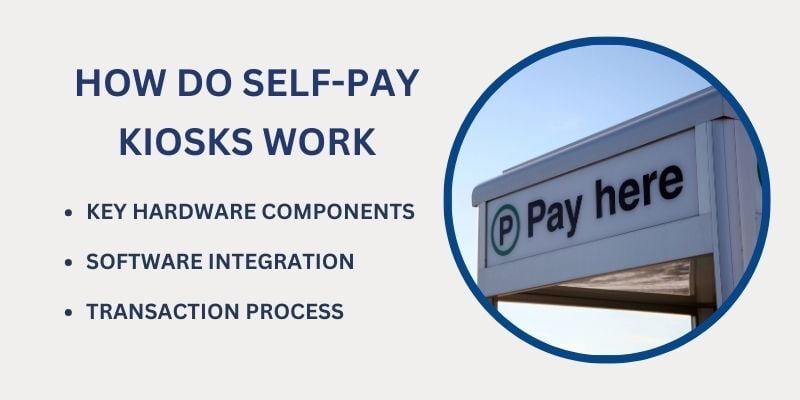
Self-pay kiosks are automated machines that help citizens pay taxes quickly and easily. They are placed in accessible locations such as government offices, malls, and transport hubs, ensuring people can conveniently make tax payments.
By reducing the need for in-person visits, self-pay kiosks minimize long wait times, lessen the workload for government staff, and allow taxpayers to complete payments on their schedules. This increased accessibility helps improve government tax collection with kiosks, leading to better efficiency and higher tax revenue.
By making tax payments easier, kiosks contribute to tax revenue growth, supporting financial stability for governments.
Key Hardware Components
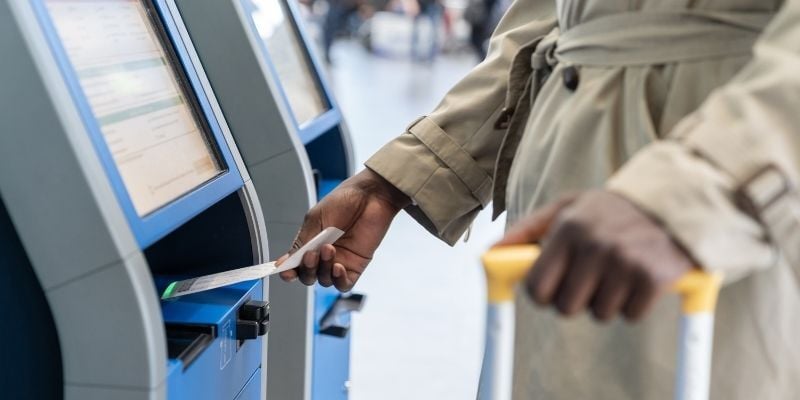
Self-pay kiosks consist of different hardware parts that make tax transactions smooth and secure:
- Touchscreen Displays – Let users interact with the system and select the type of tax they want to pay.
- Card Readers – Allow secure payments using debit or credit cards.
- Cash Acceptors – Enable cash payments for those who prefer using physical currency.
- Printers – Provide digital or printed receipts for payment confirmation.
- Barcode Scanners – Help retrieve account details or verify payment information, improving accuracy.
These components work together to speed up and make the payment process more user-friendly, ensuring that all citizens can efficiently complete transactions regardless of their preference for payment method.
Software Integration
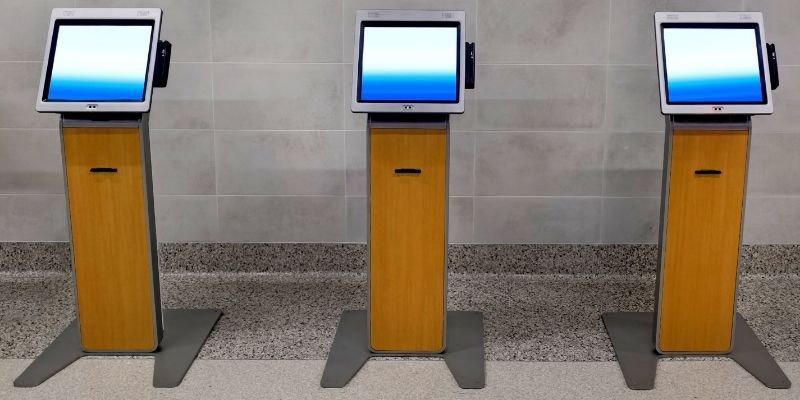
The software behind self-pay kiosks plays a crucial role in making tax payments smooth and secure:
- User-Friendly Interface – A simple design guides users step by step, making tax payments easy even for those unfamiliar with technology.
- Secure Payment Processing – Transactions are encrypted to protect taxpayer information and ensure payments go through correctly.
- Data Management Systems – Track payments, store transaction records, and provide insights to government agencies on improving tax collection strategies.
These software features help governments collect taxes more efficiently by automating the payment process, which leads to kiosks improving tax revenue and reducing administrative burdens.
Transaction Process
Using a self-pay kiosk to pay taxes is a simple process:
- Selecting Payment Options – Users interact with the touchscreen to choose the tax they must pay.
- Making Payments – Payments can be made using card readers for digital transactions or cash acceptors for those paying with physical money. Many kiosks also accept coins and bills for added flexibility.
- Receiving a Receipt – After you complete the payment, the kiosk provides a printed or digital receipt as proof of payment.
This automated system speeds up tax payments, reduces errors, and helps taxpayers avoid delays. Self-pay kiosks provide an efficient strategy by reducing the need for manual processing, benefiting both citizens and tax agencies.
Conclusion
Self-pay kiosks have digitalized the government’s way of collecting tax, making it easier, faster, and more secure for taxpayers to make payments. By automating the process, these kiosks help reduce paperwork, shorten wait times, and improve tax compliance, which leads to higher revenue collection.
Self-pay kiosks also support multiple payment methods, ensuring that all citizens can easily pay their taxes regardless of their preferred payment method. With features like real-time transaction processing, instant receipts, and secure payments, self-pay kiosks also enhance trust and satisfaction among taxpayers.
BOOK A FREE DEMO

